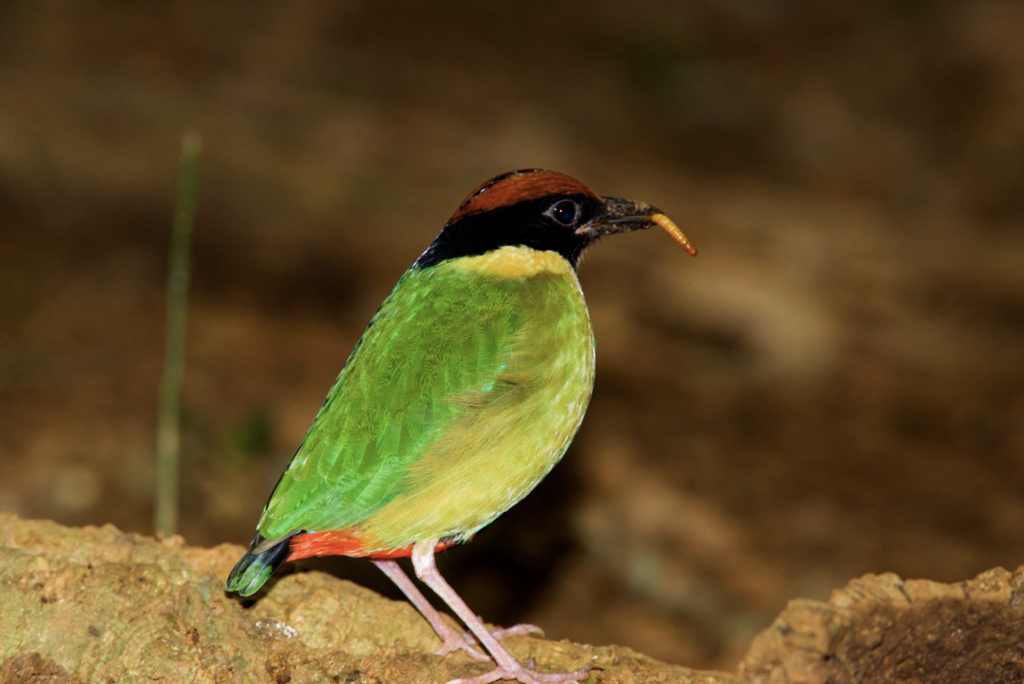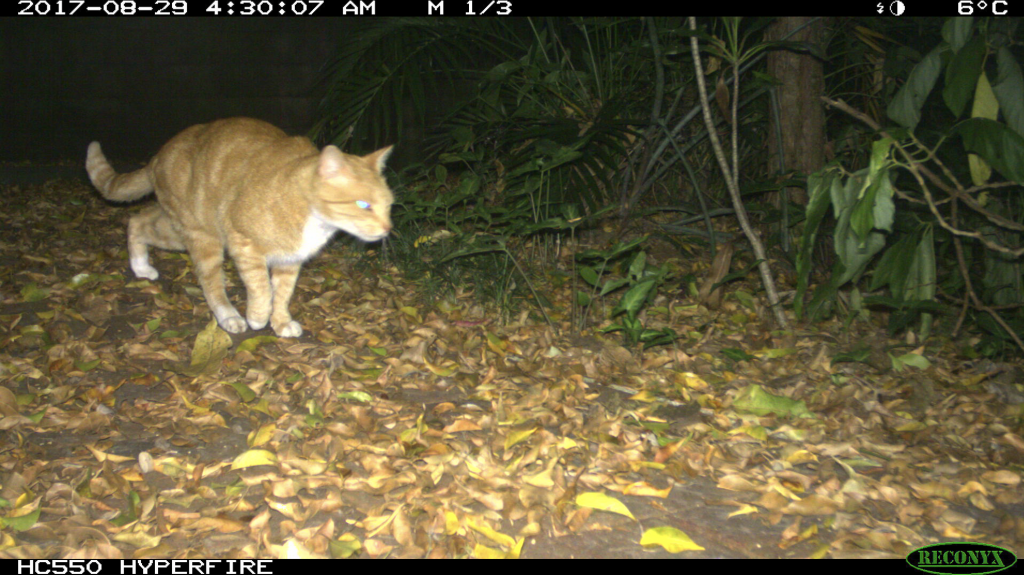Our Migrating Birds.
We give little thought to the several species of local birds that migrate massive distances twice a year to spend part of their year in our backyards.
Imagine going from Kenmore to the Bunya Mountains and back on your own steam and you would get an idea of what some of our shortest distance migratory birds do each year. That’s what the Noisy Pittas and Pacific Bazas do.
Noisy Pitta, one of our ground feeding birds found along the banks of Gold Creek – endangered by domestic cats.
Millions of tiny Yellow-faced Honeyeaters arrive from Victoria and Southern N.S.W. each year to feast on nectar from our flowering Eucalyptus in winter. They weigh only a few grams and yet they travel in such huge flocks that they can be detected by the weather radar on their trip of between 1000 to 2000km each way.
The beautiful Rose-crowned Fruit Doves, Scared Kingfishers, and Dollarbirds come from Northern Queensland and Papua-New Guinea each year to raise their next generation before flying back with their youngsters when they are only a few months old.
The real long-haul champions are the Latham’s Snipe, which arrive every winter from Japan and some even from Siberia. An enormous feat and fraught with huge dangers from weather conditions, bird shooters and loss of their regular stopover resting and feeding grounds on the way.
There are altitudinal migrants that spend the summer months out west and return east of the Great Dividing Range in winter such as the Pied Currawong.
Southern species like the Grey Fantail that head up north for the warmer winters, including the Swift Parrot that even reaches our area all the way from Tasmania.
Northern species such as the Koel (storm bird), Channel-billed Cuckoo, Sacred Kingfisher and Black-faced Monarch that fly down from PNG and northern Queensland to escape the hot wet season and breed in the summer months in southern Queensland.
Migration is the most dangerous time for birds, but the rewards of better food and climate must make the huge effort worthwhile as migration has been going on for millions of years.
However, recent studies show this may be changing, largely because of our interference. Habitat loss is obviously a major factor as migratory birds have well defined highways and stop-overs and these are being lost through our urban development.
Little research has been done on the complex migrations of birds in Australia, but a huge amount is known of the extensive migrations of hundreds of species between South America and North America.
What was of sombre interest was a recent report from the Cornell Lab of Ornithology on bird migration mortality because of human intervention. Their report of annual bird deaths from specific human-related causes (other than habitat losses) in the U.S and Canada are horrendous.
By far the highest mortality, a staggering 2.6 billion deaths annually, came from cats. Both feral and domestic cats that are allowed to roam at night. Windows accounted for 624 million, vehicles 214 million, power lines 57 million, communication towers 6.8 million and wind turbines 679 thousand. Lights from towns distracting the birds’ amazing navigation sense are responsible for unquantified losses are also probably in the high millions.
Domestic cat on the prowl for early birds at 4.30am along Gold Creek
We can act on some if not all these problems as individuals and the MCCG habitat rehabilitation programmes are making a difference locally.
We can lock up the cat at night and turn off the outside lights to help. There are things to put on windows to prevent bird strikes. Not removing Lantana until replaced by appropriate natives and simply planting shrubs like Callistemons and Grevilleas around dams and not clearing to the edge of creeks so the birds can safely come in to drink will also save many of our birds from their greatest local danger roaming domestic cats.
Get in tune with the seasons and listen out for the Rain Bird (Koel) and watch out for the Flying Hockey Stick (Channel-billed Cuckoo) and say goodbye to the Grey Fantail and welcome the Sacred Kingfishers as the spring changeover of migrant birds takes place. Think of the huge perilous undertaking they are making. Enjoy them while they are here for the migration will be reversing in autumn; but by then the next group of migrants will be arriving.
Ed Frazer



